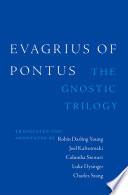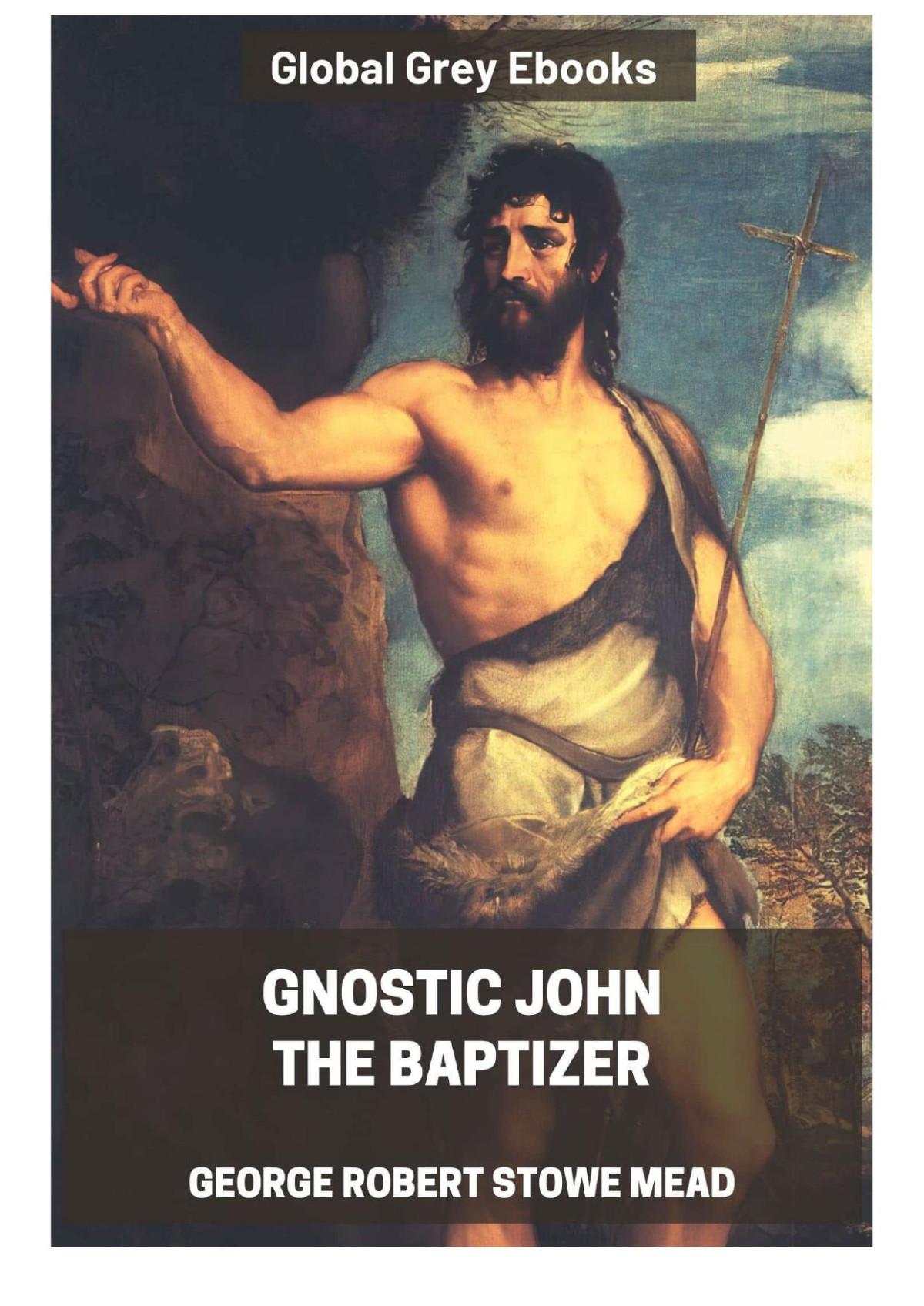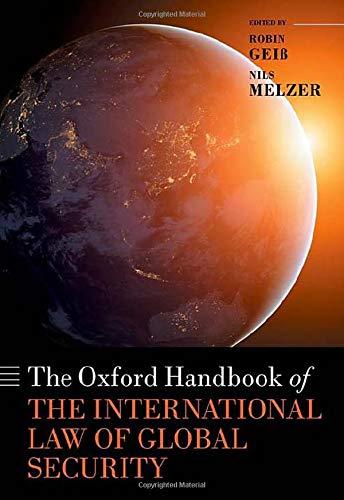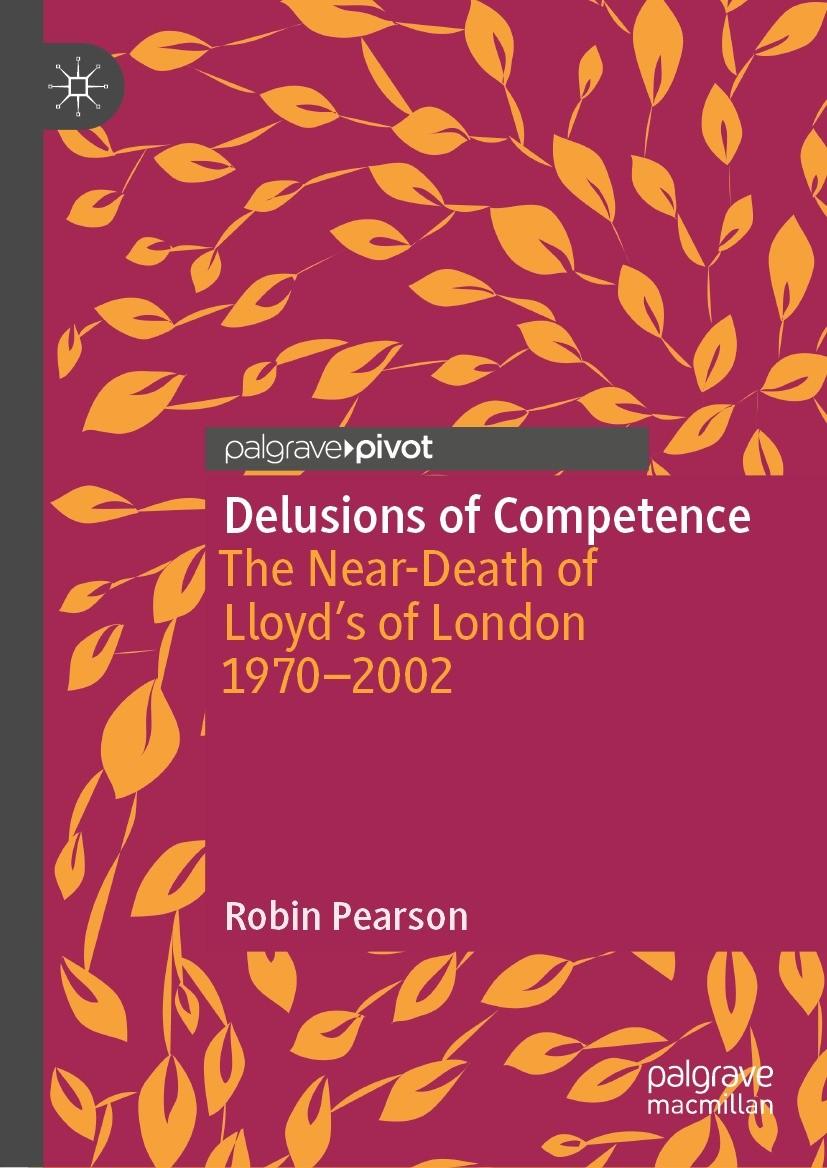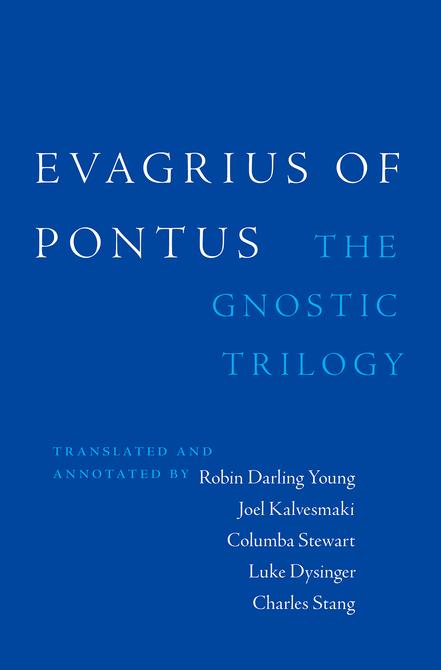The Gnostic Trilogy in Context
This book is the first English translation of the complete Gnostic Trilogy , the best- known work of the philosopher, biblical interpreter, and Christian ascetic Evagrius of Pontus (345–399). Although its first part, The Praktikos , or To a Monk , has appeared six times in recent English translations, the second part, The Gnostikos , has never before been published in English translation. Only one of the two extant Syriac versions of the Kephalaia gnostika has appeared in English, and its numerous Greek fragments have been untranslated until now.
Because interest in the work of Evagrius has expanded over the past fifty years, his readers need a clear and straightforward translation of this complex and ambiguous trilogy. We have translated all the Greek that survives of the work, as well as the Syriac versions of all three parts, adding explanatory notes.
The trilogy’s three parts are noticeably uneven in length, though all consist of an ordered assemblage of kephalaia—short, interconnected, multi-referential, and often deliberately puzzling statements. The Praktikos has one hundred kephalaia, the Gnostikos (alternatively titled To the One Who Has Become Worthy of Knowledge) contains fifty; and the Kephalaia gnostika (often translated Gnostic Chapters or Gnostic Centuries) has five hundred forty kephalaia. For reasons discussed below, neither “chapter” nor “sentence” is an adequate or accurate translation for the Greek word kephalaion (pl. kephalaia).
Evagrius indicates the structure of the trilogy in the preface, a letter to Anatolios 1 that brackets the Praktikos : “We have divided concisely matters of the life of practice into a hundred chapters and matters about the life of knowledge into fifty chapters in addition to the six hundred.” He presents the trilogy as work of two gradations, treating the Gnostikos as a companion to the Kephalaia gnostika . The Praktikos diagnoses the pathē , or disturbances afflicting the soul, and prescribes remedies for logismoi malign thoughts— so that a practitioner may calmly approach with a clear mind the observation of the visible and invisible worlds and the rational beings within those worlds. The Gnostikos , the second part of the trilogy, is a collection of fifty
1 An imperial official and associate of Rufinus of Aquileia (344/345–411) and Melania the Elder (ca. 350–410) in Jerusalem.
Evagrius of Pontus. Robin Darling Young, Joel Kalvesmaki, Columba Stewart, Charles Stang, and Luke Dysinger, Oxford University Press. © Oxford University Press 2024. DOI: 10.1093/oso/9780199997671.003.0001
kephalaia for the gnōstikos , knower or teacher— the former student now able to instruct others. The third and longest book in the trilogy, the Kephalaia gnostika , contains six books of one hundred kephalaia ; each “century” lacks ten, and the remaining ninety are encoded puzzles for the practiced gnōstikos . The ten absent kephalaia in each group may signify the unknowability of God, who is arrhētos , not to be spoken (cf. KG 1.43), but we should remember as well that the century that constitutes the Praktikos , in its first edition, lacked ten kephalaia.2
Evagrius meant these kephalaia to be a curriculum leading the gnōstikos from therapy of the soul to the accurate observation of the created world in its entirety, and then toward the encounter with the divine. Since he thought God was indescribable, Evagrius does not discuss the nature of the Trinity in the Gnostic Trilogy . Although he titled each work, and arranged each with great care, Evagrius apparently did not designate a title for the entire trilogy, and in fact the trilogy form seems to have been Evagrius’s representation of earlier work (see below). The choice to call it the Gnostic Trilogy is ours, because we recognize the author’s aim was to prepare the reader’s mind for gnōsis. For reasons both internal and external, it is certain that Evagrius meant the work to be a trilogy, signaled by thematic interrelationships, and similar structures.
Overlapping material between the Gnostic Trilogy and other works (particularly the Letter on Faith, his only securably datable work, written sometime between 381 and 383) confirms that even before his move to Egypt, Evagrius had written the Kephalaia gnostika. The Praktikos and Gnostikos were written later.3 He does not say when he actually composed any of the works, or how long it took to write them, but he circulated them while he was living in the ascetic settlements at Kellia.
Like other works of Evagrius, the trilogy is meant for ascetics—but not exclusively; askēsis, or moral training, had always been part of Christian catechesis. Regardless of their intended audience, the three parts all draw from an older approach to the philosophical life of knowledge and moral practice, rooted in the Platonism of the teachers of Alexandria, beginning with Philo (ca. 20 BCE–ca. 50 CE) and refined in the circles of students taught by the celebrated philosophers Pantaenus and Ammonius Saccas, himself the teacher of both Origen (ca. 184–ca. 253) and Plotinus (ca. 204/5–270), and the generations of students taught by them. In scripture, the books of Wisdom, the epistles of Paul, and the Gospels
2 Claire Guillaumont and Antoine Guillaumont, eds., Traité pratique, ou, Le moine, 2 vols., Sources chrétiennes 170–171 (Paris: Éditions du Cerf, 1971), 1:381–84.
3 Joel Kalvesmaki, “Evagrius the Cappadocian: Redating the Kephalaia Gnostika,” Journal of Early Christian Studies 31, no. 4 (2023): forthcoming.
urge gnōsis or knowledge upon the reader. Dualistic Platonists among early Christians had used the word for their teaching; Clement of Alexandria (ca. 150–ca. 215) was the first to reclaim the term gnōstikos for Christian teachers of the non-dualist philosophy that he thought could lead to union with the divine. Although Origen had used the word gnōsis sparingly, Evagrius embraced Clement’s approach and revived the word gnōstikos as a term for a Christian philosophical teacher.
Following Origen, Evagrius advised the gnōstikoi to use synkatabasis the temporary “descent” of a teacher to the intellectual level of a student, hiding more complex truths from the uninstructed. Philosophers had long employed this practice of pedagogical accommodation; now Christian philosophers, raised in the same tradition, employed synkatabasis and concealment (often signified by the verb apokruptō). In the Praktikos prologue, Evagrius tells Anatolios that he has “veiled certain things and obscured others,” using the terms epikrypsantes and syskiantes, “hiding and overshadowing,” so that his works could speak to two levels of student at the same time.4 Christian teachers took as their scriptural model the pedagogy of Jesus and Paul, who could teach moral teachings to the simpler students and hint at complex and hidden truths to the more advanced. The practice of synkatabasis and concealment, then, determined both the structure and the content of the trilogy.
In the Praktikos, the kephalaia are organized in blocks, under subtitles preserved in numerous manuscripts, perhaps expressing Evagrius’ original intention. The kephalaia of the Gnostikos are arranged more subtly, and in the much longer Kephalaia gnostika the kephalaia are presented in patterns easy to discern but difficult to interpret. Many series of kephalaia that belong with each other are staggered, or interwoven, with other series. Their terse style forced students to pay careful attention to every single word. The reader was expected to note relationships, to read the kephalaia slowly and repeatedly, and to draw crosscomparisons, including with other writings.
Education and Exegesis
As a young man, Evagrius had completed the course of paideia: a comprehensive education, organized as a consistent system throughout the cities of the late Roman Empire. Often established near municipal or private libraries and financed with public funds through city councils, this system of schools had a public, as well as a personal, purpose—to produce eloquent writers capable
4 Cf. Letter to Melania 15.
of using rhetoric in public settings and, at its highest level, philosophers who could communicate with each other, advise leaders of government, and train their successors.5 Although sometimes women directed such schools,6 usually women were trained, when they were trained, at home; such was likely to have been the case with Macrina and Gorgonia, and also of Melania the Elder, and of the women who studied with Jerome.7
Evagrius’ paideia, like that of Clement of Alexandria, Origen, Plotinus, and Porphyry, integrated philosophical and mythic or scriptural interpretation into a comprehensive program designed to correct and train a student in moral praxis, to make it possible for that student to avoid and defeat delusions, especially those prompted by demons, and to achieve clear observation of visible and invisible realities. For Christian philosophers of the period, it was expected that angels, the Logos, and the Holy Spirit would assist the thinker in his or her zētēsis, or inquiry, leading to the goal of theōria. Thus having absorbed the teachings of Christ and other “friends of God” they became capable of pursuing knowledge (gnōsis) and theōria, after which speech no longer obtained.
Evagrius’ scripture was the Greek Bible (for the most part, the Septuagint along with the Greek New Testament); in accord with his training, he used Platonic philosophy as an interpretive tool and second inspired text. Although he wrote four sets of biblical commentaries in the form of scholia, as described below, all Evagrius’ works quote and interpret scripture in virtually every line, usually without citation. He often embedded and linked words from different biblical books and wove them together to make new instructions or narratives. Evagrius uses this compositional method in his treatises, scholia, letters, and kephalaia. His biblical exegesis obviously was aimed to attract an audience broader than the monastic foundations with which he is usually connected; in all three sets of scholia, as with the Kephalaia gnostika, there is only one mention of a monachos or solitary (merely a cross-reference to the Praktikos), and descriptions of demonic temptation are vanishingly scarce. Throughout his exegesis, Evagrius concentrated on the moral and the “theoretical” or allegorical interpretations of scripture, showing little interest in the sequence of historical events reported in either testament.
5 See Raffaella Cribiore, Gymnastics of the Mind: Greek Education in Hellenistic and Roman Egypt (Princeton, NJ: Princeton University Press, 2001); Lillian I. Larsen and Samuel Rubenson, Monastic Education in Late Antiquity: The Transformation of Classical Paideia (Cambridge: Cambridge University Press, 2018).
6 For instance, the school of Hypatia in Alexandria; see Edward Jay Watts, Hypatia: The Life and Legend of an Ancient Philosopher, Women in Antiquity (New York: Oxford University Press, 2017).
7 See Susanna Elm, Virgins of God: The Making of Asceticism in Late Antiquity, Oxford Classical Monographs (Oxford: Clarendon Press, 1996); F. J. LeMoine, “Jerome’s Gift to Women Readers,” in Shifting Frontiers in Late Antiquity, ed. Ralph W. Mathisen and Hagith S. Sivan (Aldershot: Variorum, 1996), 230–41.
Following the principle of synkatabasis described above, Evagrius expected some readers or hearers to be able to apprehend the text only at a simple level. These were the haplousteroi or simpler Christians; in his paideia, they correspond to the praktikoi among the monks—they are the beginners. The spoudaioi, or the zealous, were Christians engaged in serious study and training at the moral and intellectual level. Gnōstikoi were those who attained such a level of virtue and intelligence that they could approach or understand the full meaning of scripture and could interpret and reveal that meaning to others—but only to those judged ready to apprehend it. In this approach, he follows not only Origen, but also Philo and Clement before Origen, and Porphyry and Iamblichus after them—and all these writers restricted the deeper meaning of a sacred text to the more advanced reader. Like Origen, Evagrius viewed a triad of scriptural books as an ascending ladder appropriate to levels of understanding along the way to union with the mind of the Logos, and finally of the ineffable Father himself. Origen’s extensive homilies and commentaries on Proverbs assisted with the praktikē, Ecclesiastes with the physikē, and the Song of Songs with the theologikē. It is notable, however, that Evagrius did not write scholia on the last of these, but focused on the wisdom literature: Job, Psalms, Proverbs, and Ecclesiastes—the works of David, Solomon, and Job. The last of these had been called a gnōstikos by Clement of Alexandria, and Origen devoted a set of homilies to the “righteous man,” both precedents that, as well as the contemporary work of Didymus, explain Evagrius’ interest.8
Unlike Origen, Evagrius seems not to have thought that scripture could contain all three senses in a single passage; rather one passage contained only one sense—ethical, natural, or theological. And whereas Origen wrote about Proverbs, Ecclesiastes, and the Song of Songs through homilies and extensive prose treatises, Evagrius avoided these and wrote tersely, in the genre of scholia. Like Origen, though, Evagrius regarded scripture as unified in vocabulary, in meaning, and in purpose. It has a customary way of expression (synētheia or ethos), often communicated through symbols (symbola) and signs (gnōrismata) so that the Logos can, through scripture, express the truth symbolically or figuratively (tropikōs). Also like Origen, Evagrius uses this exegetical approach consistently through all his works, often repeating and occasionally altering an interpretive passage from one work to another.
8 For Job as gnōstikos, see Clement, Stromateis 4.17; as “righteous,” Origen, On Prayer 29.17; and see Didymus the Blind, Commentary on Job
Writings
Scholars usually divide Evagrius’ writings into four types: kephalaia, scholia, treatises, and letters. An exception is his Antirrhetikos, or “refutations,” an apotropaic collection of scriptural texts to ward off tempting-thoughts, logismoi, prompted by demons who constantly attempt to thwart the progress of the solitary.
Apart from fragments of its original Greek, Evagrius’ correspondence survives in a Syriac version containing sixty-three letters, and in a shorter Armenian version. Because they lack salutations and valedictions, and because no letters from his correspondents remain in the collection, most addressees can be assigned only hypothetically. Other letters survive as prefatory notes to his other works. Two lengthy letters are well known for their depth and sophistication, and their shared thematic connections to the Kephalaia gnostika. One of these, his earliest known work (datable to 382?), Letter on Faith, surviving in Greek, presents a defense of faith. The Letter to Melania, another theological letter, is likely to have been written after 394.
Although every work of Evagrius contains biblical interpretation, the scholia are direct exegeses of selected verses of four works: Job, Psalms, Proverbs, and Ecclesiastes. These short interpretive passages, surviving in Greek because they were incorporated in later catenae, were meant for readers interested in a philosophical interpretation of the scriptures. Greek literary scholars had long used scholia to discover and state the symbolic meaning of Homeric works and other ancient literature, but Evagrius was one of the first Christian teachers to employ the form, and one of the first to apply it to the scriptures. Thirty-six of the 1,386 scholia on the Psalms, Evagrius’ longest extant work by far, are verbatim parallels to the Kephalaia gnostika. Five of the 388 scholia on Proverbs do the same. In the use of scholia as exegetical forms, Evagrius may have been inspired by the slightly earlier work of Didymus.9
Three of Evagrius’ works can be described as prose treatises. Evagrius addressed Foundations of the Monastic Life and To Eulogius to ascetics in the early stages of their training, and these treatises show thematic overlap with the Praktikos. A third prose treatise, About Thoughts, which may be part of a trilogy of works including the Kephalaia on Prayer and Skemmata, has many points of contact with the Kephalaia gnostika
Finally, the majority of Evagrius’ works are collections of kephalaia; apart from the trilogy presented here, he employed this form in nine of his works, not all of which, however, bear the title. In this book, we have not translated kephalaia as
9 See Richard A. Layton, Didymus the Blind and His Circle in Late-Antique Alexandria: Virtue and Narrative in Biblical Scholarship (Urbana: University of Illinois Press, 2004).
“sentences” or “chapters.” Evagrius chose his words carefully, and in his thought the Greek term does not mean a numbered and sequential division of a text, in which narrative sections follow each other. Rather, a single kephalaion is a philosophical “summary” (Plato, Tim. 26c; Theaetet. 3.67; cf. Clement, Strom. 7.4.27.6), where an internal logic governs and may refer to entire trains of thought—dialogues, treatises, or biblical books—outside the kephalaion itself but combined and compressed within by way of sophisticated allusion. Evagrius uses these methods of composition throughout his writings.10
Evagrius’ kephalaia are different from those ascribed to Mani—for example, The Kephalaia of the Teacher, where the “kephalaia” reproduce the “question and answer” form of the literary genre of erotapokrisis. Mani’s followers may have imitated an older Stoic sentence form, but they did not convey Mani’s teachings in the aphoristic, summative manner of Evagrius’ kephalaia. They, like his scholia, were the first Christian use of the genre to communicate teaching and prompt thinking and observation, and proved an influential model for dozens of later interpreters.
The Gnostic Trilogy: Manuscripts, Text, and Ancient Translations
Much of the original Greek text of the Gnostic Trilogy perished as a result of the second Origenist controversy in the sixth century, when Evagrius was condemned, along with Origen and Didymus, and many of his works were censored and destroyed. Thus, from the Gnostic Trilogy, only the Praktikos survived intact in Greek, as being a useful guide to ascetic training and combat with demonic thoughts. As for the Gnostikos and Kephalaia gnostika, only portions of the Greek remain, and the early Latin translations of all three works have disappeared. Only in Syriac and Armenian can the trilogy be found complete. But even when the works are in the same volume—a rarity—they are never adjacent. Presenting these works as a trilogy is faithful to Evagrius’ description of them and recaptures his plan of a complete monastic curriculum.
The Greek fragments of the Gnostikos and Kephalaia gnostika are of uneven quality. Some reflect the original text exactly, and others only periphrastically. In part, the degree of fidelity relates to the medium of transmission.
10 See the useful remarks in Paul Géhin, “Les collections de Kephalaia Monastiques: Naissance et succès d’un genre entre création originale, plagiat et florilège,” in The Minor Genres of Byzantine Theological Literature, ed. Antonio Rigo, Studies in Byzantine History and Civilization 8 (Turnhout: Brepols, 2013), 1–50; Joel Kalvesmaki, “Evagrius in the Byzantine Genre of Chapters,” in Evagrius and His Legacy, ed. Joel Kalvesmaki and Robin Darling Young (South Bend: University of Notre Dame Press, 2016), 257–87.
Many of the fragments of the Kephalaia gnostika come from Evagrius’ other treatises, particularly the scholia on Psalms. This overlap is not unusual for Evagrius, who reused and revised many of his kephalaia for different occasions and genres. Numerous verbatim parallels can be found crossing his letters, scholia, and treatises. Some scholars have argued that the letters were the starting point; others, that the treatises came first.11 We ourselves regard the scholia, which we believe Evagrius worked on over many years, as representing his initial work and his source of inspiration. Vocabulary specific to the verse being quoted would be substituted for terminology germane to that particular part of the trilogy.12 Regardless of the sequence of these works, verbatim parallels to the Gnostic Trilogy from his other works have significantly different phrasing, reflecting how Evagrius reused his written insights for different audiences. Such fragments cannot always be relied upon to restore the lost Greek.
Other extant Greek fragments are in collections less prone to revision and therefore are more reliable for corroborating the Syriac translations. The most significant collection is the primary anonymous alphabetized collection of Byzantine definitions, published by Furrer-Pilliod in 2000. From Collection Α we have nearly half of the Greek fragments for the Kephalaia gnostika, and the Greek corresponds strikingly to the translation of S2 (many times against S1). Other fragments survive in anthologies that circulated under Evagrius’ name or that of another, less suspect, author. Four manuscripts contain a condensed form of the Praktikos (thirty-seven chapters) and Gnostikos (nineteen chapters) presented as the work of Nilus of Ancyra. A manuscript now in Moscow (Mosc. 425, sixteenth century) preserves twenty-five chapters from the Gnostikos and Kephalaia gnostika under the name of Maximus the Confessor.13 Cod. Ambr. gr. 681 (q 74 sup; tenth century) contains about two dozen kephalaia from throughout the Kephalaia gnostika, their original order retained.14 In other cases, florilegia with excerpts from many authors contain some by Evagrius. Occasionally, however, the Greek exhibits scribal errors. Sometimes entire clauses are missing (e.g., Gn. 42), while at other times syntax, word order, or orthography has suffered.15
11 Antoine Guillaumont, Un philosophe au désert: Evagre le Pontique, Textes et traditions 8 (Paris: Vrin, 2004), 163–70; Evagrius Ponticus, Scholies aux Psaumes I, Psaumes 1-70, ed. MarieJosèphe Rondeau, Paul Géhin, and Matthieu Cassin, Sources chrétiennes 614 (Paris: Les Éditions du Cerf, 2021), 27–31.
12 For specific examples, see KG 1.36, 40; 3.48; 4.46; 5.48-49, 70, 77; 6.46, 49 and corresponding notes.
13 Irénée Hausherr, “Nouveaux fragments grecs d’Évagre le Pontique,” Orientalia Christiana Periodica 5 (1939): 229–33; Antoine Guillaumont and Claire Guillaumont, eds., Le gnostique, ou, A celui qui est devenu digne de la science, Sources Chrétiennes 356 (Paris: Éditions du Cerf, 1989).
14 Joseph Muyldermans, Evagriana: Extrait de la revue Le Muséon, Vol. 44, Augmenté de nouveax fragments grecs inédits (Paris: Paul Geuthner, 1931).
15 See KG 1.69, where most likely ἀρχών was changed via dittography into ἐλθὼν, or KG 1.14, in which only the first portion was copied.
Nearly all such fragments can be checked for accuracy against surviving ancient translations.
Sometimes a fragment survives via quotation. Socrates Scholasticus, Oikoumenios, and Gregory Palamas all quote from Gnostikos, and the KG appears in the correspondence of Barsanuphios and John (Letter 600) as well as in the writings of John of Skythopolis and Dorotheos of Gaza, who cites Evagrius frequently. Two of the fifteen anathemas of the Second Council of Constantinople (553) condemning Origenism appear to quote accurately from the KG, perhaps via an intermediary text (see notes at KG 2.17, 78; 4.18). Quotations from anti-Evagrian polemic should not be dismissed. Early Christian rhetoric had a long-standing tradition of quoting accurately from one’s opponent.
Praktikos
The Greek text of the Praktikos, along with its prefatory letter to Anatolios, is well attested in dozens of manuscripts. It is one of the few surviving Greek texts that continued to be attributed to Evagrius. The Guillaumonts, in their masterly critical edition, showed that Evagrius released two editions of the Praktikos, the first containing ninety chapters, followed by a second with one hundred.16 Both editions survive in manuscripts of the tenth to eleventh centuries. Later manuscripts (fourteenth–sixteenth) also present excerpted versions consisting of sixty-three or thirty-seven chapters. Smaller units (e.g., chapters 6–14 on the eight thoughts) or even just individual chapters were often copied in florilegia. Such selection and abbreviation are typical of ascetic literature in general and of the transmission of Evagrius’ writings in particular, aided by his choice of the kephalaion as his preferred format: a copyist or compiler could easily and selectively extract at will.
The complete form of the Praktikos consists of the prefatory letter to Anatolios, a note to copyists urging them to respect the form of the kephalaia by presenting them on the page as distinct units, the one hundred chapters, and an epilogue that again addresses Anatolios. The Praktikos was translated into Latin, Syriac, Armenian, Arabic, and Georgian.17 The earliest was the Latin version by Rufinus (Jerome, Letter 133.3), but it has not survived. The extant translations into Syriac, Armenian, Arabic, and Georgian have been little studied, and most versions remain unedited. Of these, the Syriac has the greatest number of versions (three)
16 The analysis of the Greek manuscripts was made by Claire Guillaumont in the introductory volume of the critical edition of Prak. published in collaboration with her husband, Antoine Guillaumont. Guillaumont and Guillaumont, Traité pratique, 1:127–303.
17 The best overview remains Guillaumont and Guillaumont, 1:318–337, building on the work of Wilhelm Frankenberg, Irénée Hausherr, and Joseph Muyldermans.
and manuscripts.18 The version most frequently copied was completed sometime before 523, the year of the death of Philoxenus of Mabbug, whose four quotations from the Gnostic Trilogy are influenced by or dependent upon it.19
Known as S1,20 this version is attested by eleven manuscripts dating from the sixth to the sixteenth centuries. The earliest is dated 534, and the majority are from before 900, that is, long before the oldest-known Greek manuscripts. The translator joined the Praktikos to the Gnostikos to make a single work, numbering the chapters 1 through 150. There is neither preface (the letter to Anatolios) nor epilogue, but some of the subheads were retained.
A second Syriac translation from roughly the same period (S2) retains the prefatory letter to Anatolios and the epilogue, lacks the subheads, and presents the Praktikos as an independent work (the same translator was most likely responsible for the S2 version of the Gnostikos, and thus knew them as distinct works). This version is attested directly in two manuscripts21 and indirectly in several others that contain only its translation of the letter to Anatolios.22
The third version (S3) is only partly preserved in two manuscripts that taken together provide chapters 1 through 43. Both S1 and S2 are direct translations of the original Greek; the translator of S3 seems to have known the two other Syriac versions as well as the Greek.
The Armenian translation, dating from as early as the fifth century for the Praktikos and Gnostikos, was made directly from the Greek original as was his On Prayer, unlike other Evagrian writings translated into Armenian, most of which translated a Syriac translation. The Arabic version, also made directly from the Greek and attested in two manuscripts, could be as old as the eighth century. The Guillaumonts caution that neither dating is certain.
We have translated the Greek text as edited by Claire Guillaumont. Because the complete text securely survives in Greek, we have translated only one Syriac version, the most common, S1, following a manuscript from the British Library,
18 The number of versions is established by comparison of the extant manuscripts, which reveals substantial differences that go beyond expected variations of orthography or the inevitable scribal errors. We have studied the Syriac versions closely, especially for the Gnostikos and Kephalaia gnostika, for which we do not have a complete Greek text. Assessing the quality, character, and relationship of these translations, however, is a complex problem, discussed below.
19 In the Letter to Patricius he quotes from Prak. 15 and 79, as well as Gn. 25 and 36. René Lavenant, La lettre à Patrikios de Philoxène de Mabboug, Patrologia Orientalis 30.5 (Paris: Firmin-Didot, 1963), 812, 854–856, 872.
20 The reader should note that the sigla S1, S2, and S3 are specific to each work. As it happens, all of the S1 versions may well be the work of the same translator, but this is not the case for the versions known as S2 or S3. See the table below for an overview of the Syriac versions of the Gnostic Trilogy
21 The most ample witness (BL Add. 14616) is missing a few chapters and the endings of some others; the second manuscript (BL Add. 17165) lost the original first eight folios and S2 begins only at ch. 76, the earlier chapters having been supplied at a much later date from a copy of S1. As a result, we have no S2 version of chs. 47 or 62, or of the endings of chs. 5, 14, 15, and 38.
22 Those manuscripts contain Prak. in the S1 version, with the letter to Anatolios presented as a separate work.
Add. 14578, which is exceptional because it is completely devoted to the works of Evagrius.23 The same manuscript contains the prefatory letter to Anatolios, but it is found much later in the manuscript, and, as noted above, it is by the translator of version S2. In our English translation, we have followed the order of the original Greek text, and we ask readers to bear in mind that we translated the letter to Anatolios and the main text of the Praktikos from two different Syriac versions.
Gnostikos
There is no longer a complete Greek text of the Gnostikos. Its editors recovered about sixty percent of it (thirty-one of fifty kephalaia, some only partially) from manuscripts containing selections from the work.24 The most extensive fragments come from ascetic florilegia. Some of these contain excerpts from the Praktikos and Gnostikos, presented as a single work attributed to Nilus. The manuscripts are later than those containing the complete Praktikos, dating from the thirteenth through the fifteenth centuries. In one of them (Vienna, Theol. gr. 274, early fourteenth century), an additional kephalaion survives, written in the margin by a slightly later hand, along with its original chapter number (36), a remnant attesting to a complete Greek copy of the Gnostikos. Other marginal notes made throughout the manuscript by the same learned person restore to Evagrius the authorship of almost all of his works found therein but ascribed to Nilus.25
Additional chapters have been recovered from the works of other authors. The ecclesiastical historian Socrates Scholasticus embeds seven chapters in his Ecclesiastical History (written ca. 440), attributing them to Evagrius; the oldest manuscript of this work is from the tenth century. Five other chapters, none of them preserved elsewhere, are presented in a sixteenth-century manuscript along with excerpts from the Kephalaia gnostika as a work of Maximus the Confessor. Single chapters are used by Oikoumenios in a commentary on the book of Revelation (there attributed to Evagrius) and by Gregory Palamas in his Defense of Hesychasts (attributed to Nilus, and probably gleaned from the excerpted version described above).
The Gnostikos was translated into Latin by Gennadius of Marseilles (late fifth century), but this version has been lost. There are three Syriac versions, designated, like those of the Praktikos, as S1, S2, and S3. Of these, Gnostikos S1 was the work of the same translator as Praktikos S1, and they are presented in
23 See Paul Géhin, “En marge de la constitution d’un repertorium Evagrianum Syriacum: Quelques remarques sur l’organisation en corpus des oeuvres d’Évagre,” Parole de l’Orient 35 (2010): 285–301.
24 See Guillaumont and Guillaumont, Le gnostique, 43–51.
25 But not the Chapters on Prayer.
the manuscripts as a single work with continuous numbering.26 Gnostikos S2 was translated by the same person as Praktikos S2 and is found in the same two manuscripts, though not together with the Praktikos. The Gnostikos begins with the title “To whomever [or: to the brother who] has become worthy of knowledge,” a phrase that resonates with Socrates’ description (Church History 4.23.36). Each manuscript has lacunae, but fortunately only the last words of a single chapter (21) are missing in both. S3 is a careful revision of S1 on the basis of the Greek, and it survives in a single manuscript, the precious BL Add. 17167, so important for the text of the Kephalaia gnostika (see below). The translator’s close attention to the original text makes S3 a valuable witness to those portions of the Gnostikos that did not survive in Greek. The Armenian version of the Gnostikos, like that of the Praktikos, was thought by both Irénée Hausherr and Antoine Guillaumont to have been made directly from the Greek in the fifth or early sixth century, and if this is the case, it would also be important for access to the original text and for correcting the Syriac where it seems to have altered the meaning of the Greek.27 There is no known Arabic translation of the Gnostikos.
We have translated the Greek, where it survives, and all three Syriac versions, based on a selection of manuscripts guided by the analysis found in the edition by the Guillaumonts.28
Kephalaia gnostika
Only about 25 percent of the Kephalaia gnostika survives in Greek, through compilations, quotations, and Evagrius’ own reuse of material from his scholia. The fifteen anathemas (see note at 2.78) indicate that in the sixth century a complete version of the KG was still available in Greek. Perhaps copies were available even later, as the direct or indirect source of the anonymous Byzantine definitions and the collections of extracts (see above).
The KG was translated into Syriac (twice), and on the basis of the Syriac there are Armenian and Arabic versions.29 The most common Syriac translation,
26 A vestige of the original title remains in a few manuscripts that place Prak. 54–100 and Gn. under the heading “Book of the Gnostikos.”
27 The Armenian version is faithful to the Greek in word order but is not consistent in its handling of technical vocabulary; see Guillaumont and Guillaumont, Le gnostique, 71–74.
28 For S1: BL Add. 14581 (compared with BL Add. 14578, published by Frankenberg); S2: BL Add. 17165 (compared with and supplemented by BL Add. 14616); S3: BL Add. 16167. The transcriptions were made by Columba Stewart and are available at evagriusponticus.net.
29 Paul Géhin, “La tradition arabe d’Évagre le Pontique,” Collectanea Christiana Orientalia 3 (2006): 83–104, at 95–96. To the one manuscript mentioned by Géhin, now missing, should be added two more identified by Stephen J. Davis, “Evagrius Ponticus at the Monastery of the Syrians: Newly Documented Evidence for an Arabic Reception History,” in Heirs of the Apostles: The Story of Arabic Christianity, ed. D. Bertaina et al. (Leiden & Boston: Brill, 2018), 347–392.
termed S1, is attested wholly or partially in nine manuscripts,30 and was the basis for the Armenian translation and for later commentaries on the Kephalaia gnostika by both Syriac and Armenian authors.
The second translation, S2, is a revision of S1 on the basis of the Greek, like Gnostikos S3, and is contained in the same manuscript. Both versions (Gnostikos S3 and KG S2) are most likely the work of the same assiduous translator. As with Gnostikos S3, most kephalaia have been revised (S2 left intact S1’s rendering of about one fourth of the 540 kephalaia). Unlike the Gnostikos, in this case the original translation (S1) and its revision (S2) are often dramatically different, with the translator of S2 showing clear intent to reflect the original Greek text, including the restoration of statements that had been softened or simply eliminated by the translator of S1. The single copy of S2 was discovered by Antoine and Claire Guillaumont in a manuscript at the British Museum (now the British Library) and announced in a 1952 article. Antoine Guillaumont’s edition of the text followed in 1958, and his crucial study of its significance in 1962.31 His arguments for the greater fidelity of S2 to Evagrius’ original text have gained wide acceptance.32 The circumstances of the creation of the greatly tamed S1 version remain obscure. It is commonly understood that the translator of S1 aimed to save the Evagrian legacy by eliminating teachings by then judged unacceptable. But there are counter-examples: changes that have no discernible motivation, and retention of speculative theology one might have expected to have been altered (e.g., KG 4.51). The expurgated S1 became the dominant version of the Kephalaia gnostika, and was the subject of extensive commentaries by Babai the Great (d. 628) and Dionysius Bar Salibi (twelfth century). They and others were aware of S2, but condemned it as a subversive effort to distort Evagrius’ teaching. We have translated the existing Greek fragments as well as both Syriac versions, and have commented selectively on the reliability of individual Greek fragments.
A Profile of the Syriac Translations
As indicated above, the Syriac translations not only are important witnesses to the reception of Evagrius’ writings in the East, but in many cases are also the
30 To the eight listed in Guillaumont’s edition one can add Diyarbakir, Meryemana Church 205, which contains a fragment from a ?15th-century manuscript containing KG 5.39–51 and 76–88. https://w3id.org/vhmml/readingRoom/view/124495
31 Antoine Guillaumont, Les “Képhalaia gnostica” d’Évagre le Pontique et l’histoire de l’origénisme chez les grecs et chez les syriens, Publications de la Sorbonne série patristica Sorbonensia 5 (Paris: Eds. du Seuil, 1962).
32 A recent exception is a work by Augustine Casiday, who has argued that S1 is based on a more authentic version of the Greek original, and S2 on a later (sixth-century?) revised Greek text that circulated among Origenist monks. Augustine Casiday, Reconstructing the Theology of Evagrius Ponticus: Beyond Heresy (Cambridge: Cambridge University Press, 2013).
only access we have to the lost original Greek text. Because the full Greek texts of the Praktikos and much of the Gnostikos have survived, they can serve as a benchmark for measuring the Syriac translations against the original text and for comparing them to each other. Such an investigation could be conducted across the entirety of the Evagrian corpus, but we restrict our comments to the Gnostic Trilogy
As we have seen, the Praktikos and Gnostikos each have three extant Syriac translations, and the Kephalaia Gnostika has two. The S1 versions of Praktikos and Gnostikos each try to render the Greek accurately and intelligibly, though sometimes misunderstanding the often-cryptic original text. Their shared approach to translation, as well as their appearance in the manuscripts as a single work—in every case but one, S1 Praktikos is immediately followed by S1 Gnostikos suggests the same translator. That same approach to translation features in the S1 version of the Kephalaia gnostika, though here his effort also involved a careful reframing of the content to avoid theologically problematic statements. As a result, the translator of S1 Kephalaia gnostika often departed from his Greek source. The many Greek fragments from the KG often agree with S2 against S1, or differ from both; 3.62 is the only case we know of a Greek KG fragment that agrees with S1 against S2.
The S2 versions of Praktikos and Gnostikos infrequently appear in the same manuscripts, and even when they do, they are distinct, non-contiguous works. As noted earlier, even S2’s translation of the prefatory letter to Anatolios does not appear with the Praktikos. Despite the seeming lack of understanding of the shape of the original corpus, the translator of the Praktikos and Gnostikos S2 versions revised S1 to make the technical vocabulary so typical of Evagrius more accessible to the reader. This is done by using pleonasm or glosses, as in Gnostikos 2. The more literal S3 version of chapter 2 reads:
The practiced one is he who possesses the impassioned part of his soul without passion (apathes).
The S2 version avoids both the Platonic notion of divisions of the soul and the Stoic resonances of apatheia, a term central to Evagrius’ thought, by rendering the chapter in this manner:
The practiced one is he who has caused the evil passions of his soul to cease, and possesses health of mind by means of steadfast disciplines.
Using “health of mind” to represent apatheia is not unlike John Cassian’s choice of “purity of heart” (Mt 5.8) for the same purpose. The translator’s graceful
“steadfast disciplines,” characteristic of this version, suggests a pastoral concern to focus on asceticism and not to venture into abstract contemplation.
An example of pleonasm can be found in Gnostikos 16, which in the more literal S3 version reads:
It is necessary that you have material for the interpretation of things that are said, that all these matters suffice for us, even if one of the little things escapes us. For only an angel would not forget one of those things upon the earth.
The translator of S2 has added the italicized phrases:
We need testimonies from Scripture and knowledge of the matters of the world for the sake of interpretation of those things that we teach to a disciple. And every vision of created things will suffice for us. But if a little from the knowledge of natures escapes us, and it is difficult for us to understand, let it not grieve us, because it belongs to the angels to understand perfectly everything on the earth.
The pleonastic alterations aim at a more general monastic audience by way of synkatabasis.
Another set of translations are revisions of the S1 version made for the sake of greater fidelity to the Greek. Confusingly, version numbers differ among the works. The S3 version of the Praktikos seems to be a revision of both S1 and S2; the S3 of Gnostikos is a revision of S1; the S2 of Kephalaia gnostika is a revision of S1. S3 Gnostikos and S2 Kephalaia gnostika are further comparable in that the sole witnesses come from the same manuscript, and each version tries to respect Evagrius’ philosophical vocabulary and speculative thought. S3 Praktikos, on the other hand, appears with no other version of the Gnostic Trilogy
In our opinion, the eight versions are the work of at least four but no more than six different translators, as outlined in Table 1. Syriac manuscript witnesses to the Gnostic Trilogy are listed in Table 2.
About This Edition
References
Biblical quotations follow the chapter and verse numeration of the Septuagint. A reference in parentheses points to the corresponding chapter or verse number in modern English translations. To reduce clutter, and to aid in reference to the 2021 edition of the scholia on the Psalms, we have avoided double numeration for the Psalms, most of which differ by one chapter (e.g., Ps. 50 LXX = Ps. 51 English).
Table 1 Translators
A Translator of unknown background; tendency toward literal translation technique. This set of translations became the most influential, and so are sometimes called the “common version.” May be the same person as translator E.
B Translator intent on making the text accessible to a broad audience. The translation tends to be loose, in service to clearer Syriac syntax and semantics, and employs euphemisms or glosses for the sake of comprehension. There is no evidence that he used any other translation.
C Translator of unknown background. Seems to have worked from both S1 and S2 as well as the Greek text.
D Translator of unknown background. Adjusts the work of translator A. May be the same person as translator F.
E Translator of unknown background. Literal translation technique, much like translator A, except for metaphysical or speculative passages that are edited or eliminated. May be the same person as translator A.
F Translator of unknown background who revised A’s translation of the Kephalaia gnostika. The style is literal, adhering closely to the Greek, and respecting the philosophical vocabulary and speculative thought of Evagrius. May be the same person as translator D.
Pr Gn KG
S1 S1
S2 S2
S3
S3
S1
S2
References to the Epistula fidei follow Bunge’s numeration system (1–40), which is better at pinpointing specific passages than is the older system (1–12); references to the Letters and the Letter to Melania follow Bunge’s system as well. For other works of Evagrius, we follow the numeration adopted in the Sources chrétiennes edition, if available.
Annotations
Several principles have guided us as we have commented on the kephalaia of the Gnostic Trilogy. Our primary goal has been to help readers study the work for themselves and gain their own understanding of it. To that end, we have frequently refrained from interpreting or explaining Evagrius’ meaning and have instead emphasized intertextual relationships. In addition to the verbatim quotations from scripture, we provide references to other biblical verses that resonate with Evagrius’ vocabulary. When he appears to invoke the philosophical tradition directly, we offer select references to Plato, Aristotle, Porphyry, and
Table 2 Manuscript Witnesses to the Syriac Versions of the Gnostic Trilogy MS Praktikos Gnostikos
BL Add. 12175 96v–98v 101r* 99r–101r 81r–96r
BL Add. 14581 12v–23r 23r–27v
BL Add. 14578 2v–11v 152r–153v*
Berlin Syr 27 22r–28v 41v–42v*
BL Add. 14582 125r–141v
BL Add. 18817 35v–49r 49r–53r BL Add. 12167 84v–94v 94v–98v BL Add. 14579 20r–27v 27v–31v BL Add. 17165 1v–7r 9r–15r**
Vat. Syr. 126 224r–227v
London BM Or. 2312 53v–61v 104r–*
BL Add. 14616 2v–26r** 33r–40r
BL Add. 14621 127r*
BL Add. 14541 50*
London BM Rich 7190 65r* 57v–59v, 69v
BL Add. 14650 6v–8v
BL Add. 17166 22r–24v, 25r–27r
56r
Table 2 Continued MS Praktikos
Mingana Syr. 68 1r–11r*** 11v–14v
BL Add. 17167 8v–13r
60r
BL Add. 14615
Vat. Syr. 178
Berlin Syr 37
BL Add. 14635
* = Prefatory letter to Anatolios only
** = Lacks prefatory letter to Anatolios
*** = assumed to be S1; not discussed in SC 170
other earlier writers. The same applies to early Christian writers: references to Clement, Origen, Didymus, Gregory of Nazianzus, Gregory of Nyssa, and others are meant to exemplify, not delimit, Evagrius’ engagement with his Christian library. Our cross-references are diagnostic examples, to help readers conduct more exhaustive studies on any particular topic.
As for cross-references to Evagrius’ own corpus of writings, we have emphasized primarily passages in the Gnostic Trilogy itself. For topics and themes that are of a manageable scope, we provide select cross-references to other writings that seem particularly appropriate. Our references are not exhaustive, but should provide a solid starting point for anyone who wishes to conduct more thorough research.
Because we have been working closely with the Greek and Syriac versions, we have registered a number of philological observations, primarily for those readers who are interested in Greek and Syriac terminology. When we comment on the Syriac translations, we have relied upon comparisons with related Greek texts, such as the New Testament (Peshitta), and the Syriac translations of the Epistula fidei, Letters, and the Letter to Melania.
We have avoided references to secondary studies, with some exceptions for complex topics that require discussion beyond the average length of note we have adopted. Attentive readers will notice that many of our notes reproduce references or observations made by previous commentators, particularly the Guillaumonts and Géhin. We have been selective in these choices as well, and focused on those references best suited for brief annotations. Those who wish to do more systematic study of the Gnostic Trilogy should consult other translations and editions, as noted in our bibliography.
Reading the GT today
For the first time since late antiquity, this book gathers and presents the entire Gnostic Trilogy bound together, complete, and in order, as Evagrius intended. Readers can use this translation of the Gnostic Trilogy in several different ways: as an entry point into Evagrius’ writings and thought; as a collection, in one volume, of a work crucial to understanding the entire Evagrian corpus; and as a case study in Evagrius’ complicated legacy, especially in the Syriac tradition. Our translations of the Syriac will help some to think about and reconstruct the lost Greek; it will help others gain some appreciation for how Syriac speakers encountered Evagrius. Some readers may wish to read from beginning to end. Others may wish to read selectively, for example according to topic or scriptural verse. To that end the index and specific notes will be most useful. Whether this book is read sequentially or selectively, it should be read carefully, and repeatedly.
It is not unusual to need several minutes—or even years—before beginning to understand a single kephalaion.
Accordingly, we have tried to provide a usable, reliable translation of the surviving ancient versions for those who are unfamiliar either with the Greek language of the original texts or with the languages into which they were translated in the late ancient world. For readers with a working knowledge of Greek and Syriac, on the other hand, our translation renders Evagrius’ thought, and his precise vocabulary, into a consistent English translation that allows consultation of the critical editions (where they exist) or of the various manuscripts. We have tried to place in the hands of scholarly readers a book that enables them to enter the continuing discussion of this puzzling writer. In translating both the Greek and the Syriac, we have attempted to replicate syntax, word order, and ambiguity. The works are full of Greek technical terms—both philosophical and exegetical—that are conveyed in the Syriac in different ways, sometimes in common words, sometimes in transliteration. We have followed this lead, in that we adopt for praktikos, gnōstikos, and theologikē the English terms practitioner, knower, and theological (and cognates for other forms of those words), but we include the transliteration of the underlying Greek term in parentheses or in our notes. In this way, readers who can access neither the Greek nor the Syriac can apprehend in a clear English style the underlying mechanisms of the text.
Evagrius used four words that we have decided to transliterate because each is capable of differing meanings in different contexts.
Apatheia, technically “the absence of [emotional] disturbance,” and a favorite term in Stoic ethical discourse, is better understood in the context of Evagrius’ writings as “absence of pathē,” or “calm” as a positive state.
Akēdia, sometimes translated “depression,” or “dejection,” refers instead to lack of effort, or boredom with a task; but may or may not signal a state of mind.
Thēoria was a case in which the translators could not agree on one meaning; some preferred the traditional “contemplation,” but others favored “observation.” There are good arguments for each, and the reader can decide which meaning better fits the particular context in which the word appears.
Finally, there is logos, a word with an ample set of meanings, ranging from word, to speech, to discourse, to reason, or to the inner structures crucial to any being or object in the cosmos—or outside the cosmos, as when logos means Word of God.
In our translations of the Syriac versions, when we encounter a word that certainly or likely corresponds to one of the Greek words above, we may or may not use the transliteration.
The idea for this translation arose at the 2011 meeting of the Syriac Symposium. In ensuing years the translators gathered to work in several locations: the Institute of Christian Oriental Research at the Catholic University of America; the University of Notre Dame; Dumbarton Oaks, where we held a symposium on “The Legacy of Evagrius”; St. Andrew’s Abbey in Valyermo, California; the Cenacle in Chicago, Illinois; and at the Institute for Advanced Study in Princeton, New Jersey. We thank those institutions. We have worked both separately and together, in person and later, during the pandemic, through videoconference between the hours of Matins and Lauds—between Gaithersburg and Washington. The Text Alignment Network version of the parallel Greek, Syriac, and English texts and translations—developed by Joel Kalvesmaki—has been essential. The underlying Greek and Syriac texts for every version translated in this book are available at the Guide to Evagrius Ponticus, http://evagriusponticus.net, in both HTML and master TAN-TEI XML versions.
We thank Ian Gerdon, then a student at Notre Dame, for his assistance at our meeting on that campus; Carl Vennerstrom and Nathan Tilley for reading drafts of the work and catching errors; Margaret Mullett, former Director of Byzantine Studies at Dumbarton Oaks; Fr. Sidney Griffith, who encouraged the translation project when it began; and our families for their encouragement and forbearance.
